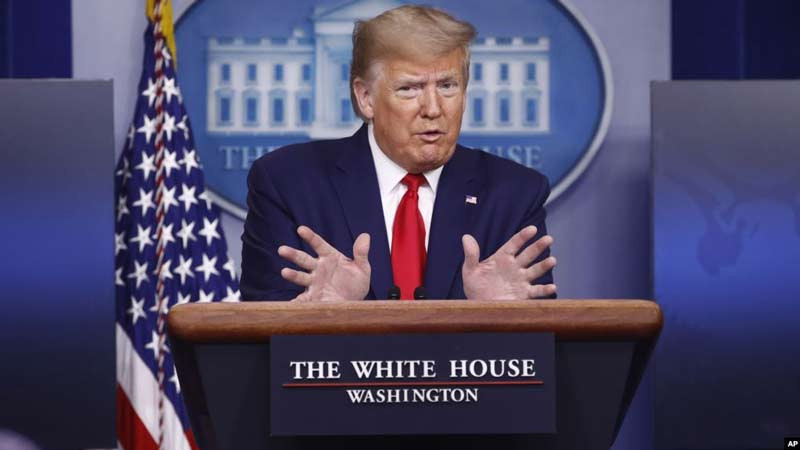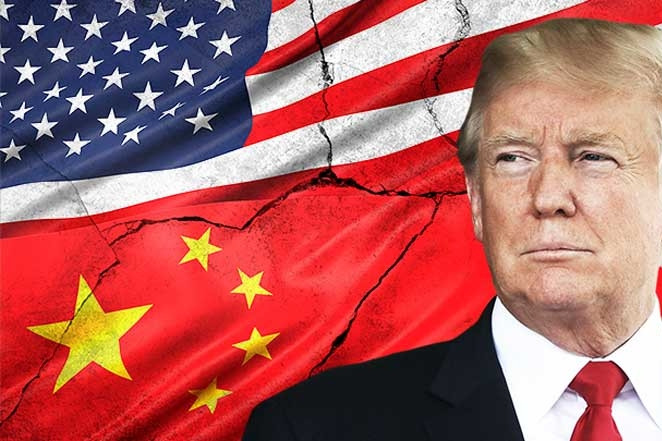100 days of turmoil
In the trading session on April 28, two days before Donald Trump completed his second term as US President, the US stock market increased quite strongly. The broad-based S&P 500 index recorded its fifth consecutive increase. Other stock indexes were also positive.
US stocks rebounded after earlier slumping, losing about 10% and posting the worst first 100 days of any administration on record. US stocks rebounded as several major technology companies reported strong earnings and investors awaited progress in trade talks between the US and countries including China.
Also in the first 100 days, financial and commodity markets in the US and around the world fluctuated strongly. The USD fell to its lowest level in 3 years, and the price of gold continuously set all-time records, reaching 3,500 USD/ounce (equivalent to 111 million VND/tael) on April 22.
Gold prices fluctuated strongly in the last two weeks of April, continuously setting historical records and also having many sessions of deep decline. Money flowed strongly into gold as a safe haven amid escalating US-China trade tensions.
Notably, the US dollar lost nearly 9% against other major currencies, with the DXY index falling from around 110 points in mid-January to 99 points. This development shook the safe-haven status of this currency as investors doubted the stability of the US financial system. Oil prices also fell sharply due to concerns about a weakening US and global economy .
Trump’s tariffs, with a 145 percent tariff on imports from China and tens of percent tariffs on many other countries, including Canada and Mexico, are showing signs of disrupting global supply chains. American manufacturers are facing rising raw material costs, such as Ford, which is struggling due to steel and aluminum tariffs.
Ford CEO Jim Farley acknowledged that Mr Trump’s goal is to strengthen the US auto industry, but he stressed that the current tariff policy brings “more costs and chaos” than benefits.
According to the Tax Foundation, the policy of increasing import tariffs brings revenue to the US budget but increases consumer prices, especially electronics and clothing.
Still, Mr. Trump’s efforts to bring manufacturing back home have made some progress. The CHIPS Act boosts semiconductor production. Intel expands its U.S. plants. Apple plans to partner with Foxconn to build a server assembly facility for Apple Intelligence’s Houston data centers. Several European pharmaceutical and auto companies are stepping up investment in the U.S.

Potential impacts and economic outlook
It can be seen that since taking office on January 20, US President Donald Trump has promoted the "America First" agenda with high tariffs on imported goods, reducing domestic taxes, tightening immigration and cutting federal personnel...
The Trump administration’s immigration crackdown, which focuses on border control, building a wall with Mexico, deporting illegal immigrants and restricting legal immigration, has shrunk the labor force in industries such as construction and agriculture . Goldman Sachs said this may increase wages, but industries that rely on immigrant labor are having trouble recruiting.
As for Trump’s tariff policy, it is currently difficult to predict. The White House is imposing a 145% tariff on Chinese goods (since April 10), while Beijing imposes a 125% tariff on American goods. Previously, Mr. Trump threatened to impose a 245% tariff on Chinese goods, but then talked about the possibility of “drastically reducing tariffs on Chinese goods” if Beijing opens its market…
Given the recent tensions, the high tariffs between the US and China are likely to remain in place, or even rise further. If this happens, the US economy could fall into stagnation – high inflation combined with slow growth.
On the other hand, a trade deal with China could help stabilize financial and commodity markets in the short term. In the short term, the US economy will be less at risk of recession. However, recently, the Beijing government has been tough and denied a high-level phone call between the two sides.
In fact, the US has faced persistent inflation for many years, not reaching the 2% target as expected by the Fed. With new policy developments, consumer prices are likely to rise again.
In addition, the Trump administration's domestic tax cuts and spending plans will continue to push up the US public debt, which has already surpassed $36 trillion.
Previously, according to forecasts from experts released by Nikkei Asia, the Donald Trump administration's tariff policies could reduce US GDP by 1.1% by 2027.
The US economy seems to be at a crossroads. Many optimists believe that the US economy will continue to grow. Large corporations, especially in the technology sector in the US, will continue to record high profits. However, on the other hand, the risk of a US recession is increasingly mentioned as policies are causing chaos in many markets.
In the long term, bringing production back home may strengthen American industry, but in the short term it will probably be “painful”. Commodity prices are rising, markets are volatile. How Mr. Trump deals with domestic pressure when markets are volatile, or how he will balance between protecting domestic production and global cooperation… will decide the prospects of the world’s number 1 economy.
Macro indicators show that the US economy remains strong and the world’s largest, but competition is growing. Maintaining short-term stability while ensuring long-term prospects may be a difficult problem for Donald Trump.

Source: https://vietnamnet.vn/100-ngay-ong-donald-trump-lam-tong-thong-nga-ba-duong-cua-kinh-te-my-2396546.html






























































































Comment (0)